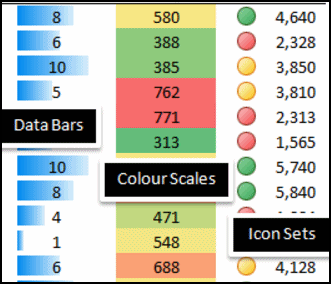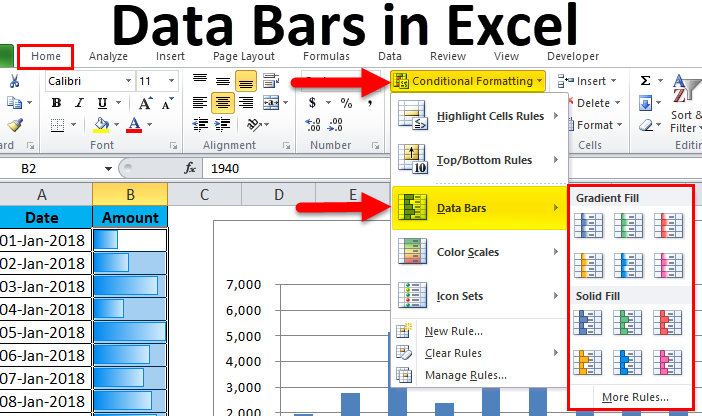

You can start building this array formula from the inside. But when used inside conditional formatting, they don’t. When used in a worksheet cell, array formulas require you to press Ctrl+Shift+Enter to complete the formula. But you’re likely to encounter many other users who don’t have the latest version of Excel, and the formula will stop working.Īlthough rarely used, the powerful array formula would allow you to test for the smallest value that isn’t zero, even in earlier versions of Excel.
SOLID FILL GREEN DATA BAR CONDITIONAL FORMATTING EXCEL 2016 UPDATE
If you happen to be using Office 365 and have downloaded the February 2016 update to Excel, you could easily solve this using the new MINIFS function. Your goal is to highlight the smallest cell in each row that has a value greater than 0. Your manager wants you to ignore the zero values. But after using this technique, you realize there are quarters where certain products aren’t offered for sale and the zero-quarter sales figures are getting highlighted (see Figure 2). In a similar fashion, you can highlight the smallest value in each row by changing the formula in step 4 to =B3=MIN($B3:$E3).

In the case of row 8, where B8 and E8 are equal, both will be formatted. You should see the largest value in each row change color.

In the conditional formatting rule, you could represent this as =B3=MAX($B3:$E3). For cell B3, you want the cell to be highlighted when it’s equal to the largest value in B3:E3. You need to build a formula for the top-left corner cell of the range. Use conditional formatting to call attention to the quarter in each row that had the largest sales compared to the other quarters. Cells B3:E12 of Figure 1 show the quarterly sales for several product lines.


 0 kommentar(er)
0 kommentar(er)
